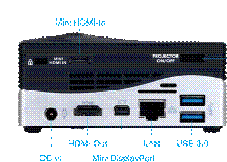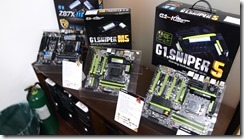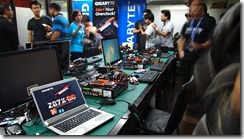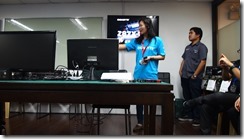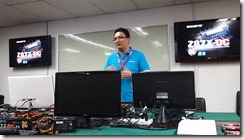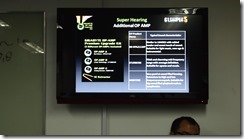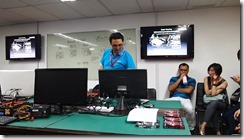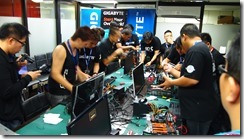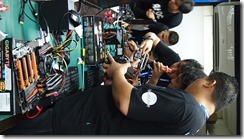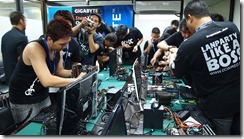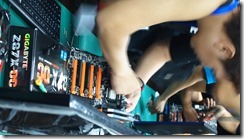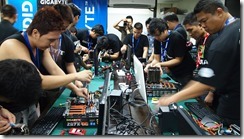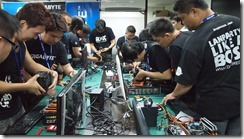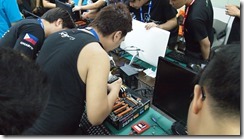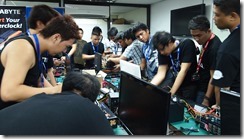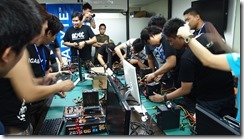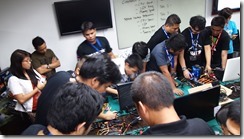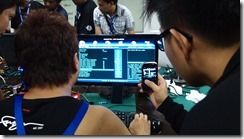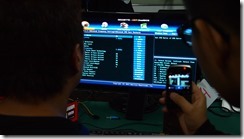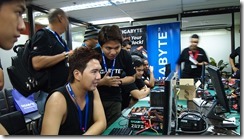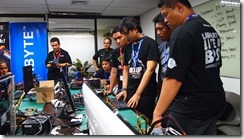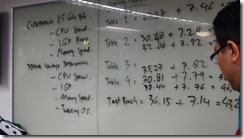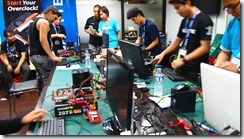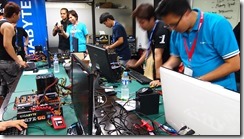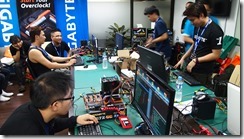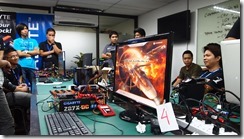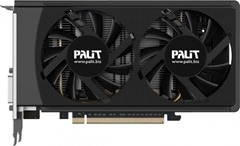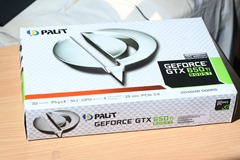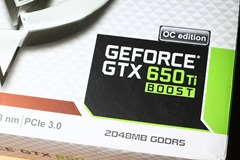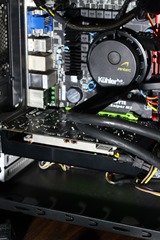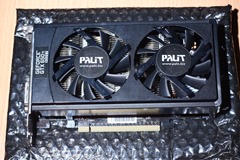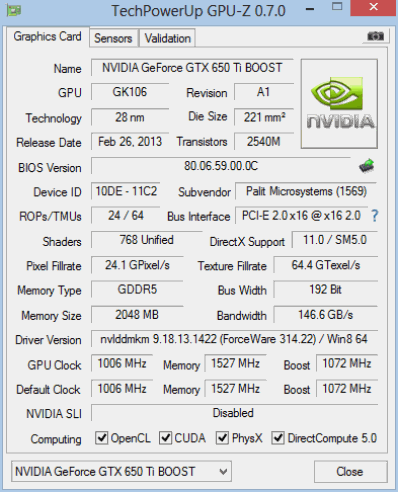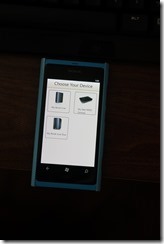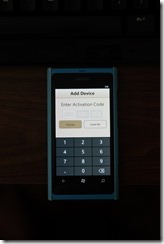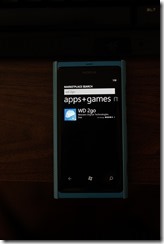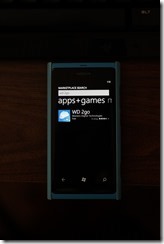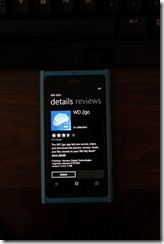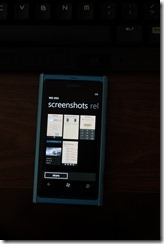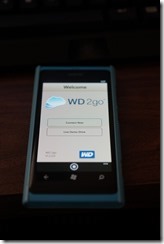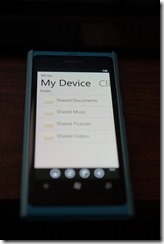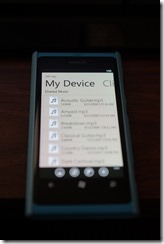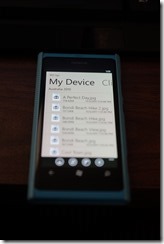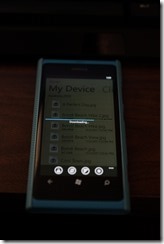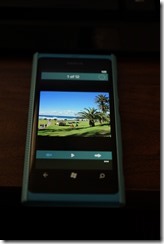Archive
Gigabyte Champion Series Boards
I kind of missed this email from my inbox earlier last March regarding some new product releases from Gigabyte. Might as well post it now as summer has officially started in the Philippines. For those looking into making a new highend gaming machine / upgrading over this long break for some (whose schools will be transitioning to an August start date).
“Taipei, Taiwan, March 6th, 2015 – GIGABYTE TECHNOLOGY Co. Ltd., a leading manufacturer of motherboards and graphics cards is proud to announce today the addition of 4 new high performance motherboards to their comprehensive Intel® X99 chipsets offering with the X99 Champion series. The new motherboards consist of the X99-Gaming 5P, X99-UD4P, X99-UD3P and the already famous X99-SOC Champion.”
The boards now boast of having support for higher memory frequencies, enabling enthusiasts/professional overclockers to push new machines to an even faster setting than before.
Gigabyte has partnered up with Corsair to produce RAM sticks that are compatible to both memory speed as well as board aesthetics.
“DDR4 memory modules are available at a stock frequency of 2133MHz, but memory vendors encode XMP profiles which can automatically modify the frequency and timings of the supported memory modules to work in par with your CPU. With the X99 Champion Series, GIGABYTE is offering a tested and proven platform that ensures proper compatibility with profiles up to 3200MHz, and exclusively 3400Mhz for the X99-SOC Champion”
“Paired with DDR4 memory such as the Corsair® Limited Edition Orange Dominator® Platinum kit, which was custom designed for the GIGABYTE X99-SOC Champion motherboard, users can take advantage of better responsiveness during gaming and faster operation execution in memory demanding works applications.”
Corsair® Dominator® Platinum Series 16GB DDR4 DRAM 3400MHz C16 Memory Kit
“GIGABYTE X99 Champion series motherboards also provide support for RDIMM memory which allows users to use greater density memory sticks up to 16GB per stick. This paired with a range of exciting features such as the GIGABYTE’s Amp-Up Audio, Killer™ E2200 or Intel® gigabit Ethernet controller and unique GIGABYTE Ultra Durable™ features means that users can truly build a PC that brings them exceptional performance and durability.”
GIGABYTE X99 Series Motherboard Models*
For more details regarding GIGABYTE X99 Champion series motherboards, please go to:
Gaming Mice and Keyboard Long Haul Review
I started this review roughly 2 1/2 years ago with the aim of getting the best bang for the buck gaming peripheral in the market. I chose Razer then, having the most rounded features at their disposal (mouse sensitivity, ergonomics, design, software), with a bit of a hit in the budget, being slightly more expensive than the competition (Logitech), but still boasting enough new features to beat them.
(This kind of explains why for a longer span, I couldn’t play/review games.)
2015 and now I’m using an all Logitech setup. Why is that? First of all, both my Razer Blackwidow and Imperator conked out. The Blackwidow, for all it’s mechanical glory, had its Left Shift key die on my while playing Battlefield 4 when it came out – it’s now a glorified extension keyboard for my laptop at work. I don’t need to continually press the right shift key when using it to program (except for emails). As for the Imperator, it ended in the trash bin. The left mouse stuck and I tended to double tap the key unnecessarily. I did the usual steps in cleaning the contacts, but it didn’t work, and seems the paint began wiping off too. The worst part is, these products died off just a tad few days AFTER each of their warranties ended.
This lead me to go back to Logitech, as history has proven to me that the product’s reliability/durability as the best. I’ve replaced similar mice bundled with my old PCs from years ago with Logitech mice and usually outlived the computer. Fortunately Logitech did up its game by repackaging their gaming products with the G brand more prominently displayed (blue G logo) and actually updated the designs, software and performance of their keyboards and mice.
For the keyboard, I ended up buying the G105 (which I tested before), I didn’t mind that it’s a membrane keyboard as long as it performed its job well, though I’m a bit bothered that the design remained the same 2-3 years ago still. I’d go for the G910 Orion Spark, but a.) it wasn’t available locally last year… and b.) when it finally arrived, the price was incredibly steep, more expensive than the Blackwidow 2014 Ultimate Stealth edition with their new Green mechanical Keys. Well, I just hope it does last longer than the original Blackwidow I bought, if I do get to buy one.
As for the mouse, I was aiming for the G502 Proteus Core (see picture), but I ended up with
the G402 Hyperion Fury, which is the middle model of the new series of gaming mice by Logitech. Actually the G402 is the successor of the MX518 gaming mice release almost a decade ago. The ergonomics has been improved as well as its look (simple black color with some areas having a coarse grippy material and lined with slick plastic), with a matching G logo with a pulsating blue LED. So far playing FPS has been a great experience with its improved performance in being able to pinpoint mouse movement better than what I’ve had before (less lag, better accuracy when aiming).
The main concern with getting these G products from Logitech is that it’s usually Gray Import stuff, and what makes me wonder why Logitech’s local PH office is still pulling its punches on gaming peripherals especially if their new ones are so damn good?
Western Digital Valentine’s Gift Guide
WD’s Gifts for Him and Her
Valentine’s Day is upon us once again! Are you looking for a present that you and your date will remember for years to come – let WD help you.
The perfect his and hers drive
My Passport® Ultra™ – Metal Edition™
Coming in three colors, My Passport Ultra is the perfect his-and-hers portable hard drive. The striking colors add style, while an innovative and radical design protects against everyday knocks.
Password protection and 256-bit hardware encryption also ensures the security of every photo, video, music and important file you save.
To celebrate the 10th anniversary of My Passport, My Passport Ultra Anniversary Edition is only available for a limited time.
|
MSRP: 1 TB – Php 4,590 2 TB – Php 7,490 |
|
For romantic road trips
My Passport® Wireless
If you’re both selfie addict and love taking pictures of food on your travels, then the My Passport Wireless could be a great gift for either one of you. My Passport Wireless allows you to wirelessly back up all your smartphone photos onto the portable hard disk drive.
In addition, a built-in SD card slot allows you to transfer photos directly from SD cards in your camera, right into the My Passport Wireless. You won’t need a laptop to store your photos, and free up space on your camera in no time!
Frame, shoot, backup and repeat!
|
MSRP: 1 TB – Php 9,590 2 TB – Php 11,990
|
|
For all his movies and videos
My Book® Duo 12 TB
If your man has a large music and video library and worries about the lack of digital storage space in his computer, or about waiting too long for files to be transferred, then the My Book Duo would be an excellent choice!
With transfer speeds up to 290 MB/s, My Book Duo boasts the ability to transfer a full-HD movie in just under 20 seconds.[1] My Book Duo also features two additional USB expansion ports for easy additional storage.
The sheer volume of storage potential, as well as fast transfer speeds offered by the My Book Duo means that he now has room to store even more movies and music, and your entire digital collection! Looks like movie night is taken care of for the next few decades.
|
MSRP: 4 TB – Php 13,990 6 TB – Php 16,990 8 TB – Php 22,990 12 TB – Php 31,990 |
|
[1] Read speeds (MB/s) for HD video. Performance based on 4 GB DVD movie files. Performance may vary based on operating system and hardware configuration.
WD® IN PHILIPPINES LAUNCHES SAVE YOUR MOMENTS ON YOUR PERSONAL CLOUD WITH WD PHOTO CONTEST
Online Contest Gives Consumers a Cloud of Their Own
February 28, 2014 – WD® in Philippines is pleased to announce its Facebook contest entitled, Save Your
Moments on Your Personal Cloud with WD® Photo Contest. This contest is open to all Filipino residents
18 years old and above.
Everyone is inundated with thousands of digital files scattered across multiple computers and mobile
devices. WD My Cloud™ is a complete solution for users to organize, centralize and save the digital
content, and access those files from any device, from anywhere in the world. With direct file uploads
from mobile devices, important files and videos can be safely moved to My Cloud, freeing up valuable
space on users’ tablets and smartphones.
Beginning from 28 February, 2014, consumers can follow these simple steps to participate:
• Visit WD Philippines Facebook page at http://www.facebook.com/WDPhilippines and click on the
link to the contest site.
• Upload a photo you most like to keep safe on your Personal Cloud, and write in no more than 30
words, tell us “Why I like to save the photo on WD My Cloud?”
Attractive prizes will be awarded to participants with the best photo and caption:
First Prize: WD My Cloud 4 TB x 1 unit and Apple® iPad Air™ 16 GB Wi-Fi x 1 unit
Second Prize: WD My Cloud 3 TB x 1 unit and ASUS MeMO Pad™ HD 7 16 GB x 1 unit
Weekly Prize: My Passport® Ultra™ 1 TB x 1 unit
More information about WD My Cloud can be found on the company’s website at http://wdc.com/en/
products/products.aspx?id=1140
Product Announcements (September–October)
WD Introduces Redesigned the popular My Book and My Book for Mac
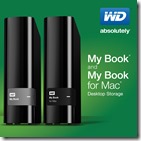 September 30, 2013 - WD Philippines has announced the release of their redesigned external drives with capacities reaching up to 4TB in size. Along with the higher capacities, WD has also updated the current suite of software found within the external drive with the following: SmartWare Pro automatic backup software with Dropbox integration, and WD edition Acronis True Image. The two new software packages will aid in backing up files and for use in disaster recovery (Acronis True Image WD edition).
September 30, 2013 - WD Philippines has announced the release of their redesigned external drives with capacities reaching up to 4TB in size. Along with the higher capacities, WD has also updated the current suite of software found within the external drive with the following: SmartWare Pro automatic backup software with Dropbox integration, and WD edition Acronis True Image. The two new software packages will aid in backing up files and for use in disaster recovery (Acronis True Image WD edition).
My Book and My Book for Mac hard drives are protected by a 3-year limited warranty and is available at selected retailers and distributed by EA Global Supply Chain Solutions, Inc. and Iontech. Manufacturer’s Suggested Retail Price (MSRP) on My Book 4 TB will be PHP 9,990, and the Manufacturer’s Suggested Retail Price (MSRP) on My Book for Mac 2TB will be PHP 6,090 and PHP 7,590 for the 3 TB.
Gigabyte Announces the BRIX Projector
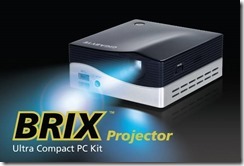 October 14, 2013 – Gigabyte Taiwan has just introduced their latest addition to the BRIX range of ultra compact PC kits, the Gigabyte BRIX Projector. This compact PC packs in a 75 lumen backlit LED projector from its casing, along with stereo speakers. It is powered with a 4th Generation Intel i3 processor and has video input ports (HDMI, and Display Port) if the user wishes to continue using a monitor. The addition of a built in projector aids in making presentations on the go easier by having the convenience of having a projector and a computer in one package. The following further details the specs:
October 14, 2013 – Gigabyte Taiwan has just introduced their latest addition to the BRIX range of ultra compact PC kits, the Gigabyte BRIX Projector. This compact PC packs in a 75 lumen backlit LED projector from its casing, along with stereo speakers. It is powered with a 4th Generation Intel i3 processor and has video input ports (HDMI, and Display Port) if the user wishes to continue using a monitor. The addition of a built in projector aids in making presentations on the go easier by having the convenience of having a projector and a computer in one package. The following further details the specs:
Projector Feature Highlights:
· 75 lumen DLP (LED Backlit) Mini Projector
· WVGA 854 x 480 Resolution
· 16:9 Aspect Ratio
· Variable 7” – 85” Projected Image Size
· Adjustable Focus
· 1.5 watt Integrated Dolby Stereo Speakers
· HDMI Input Port
Technical Highlights:
· 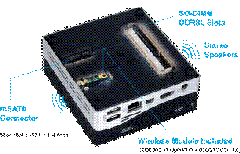 Intel® Core™ i3 4010U Processor (Haswell)
Intel® Core™ i3 4010U Processor (Haswell)
· Intel® HD Graphics 4400
· Up to 16GB SO-DIMM DRR3L (1.35v)
· 1 x mSATA SSD slot (up to 256GB)
· Wi-Fi IEEE 802.11b/g/n + Bluetooth v4.0 Mini-PCIe Module (included)
· 1 x HDMI, 1x Mini-DisplayPort
· 4 x USB 3.0
· 1 x Gigabit LAN
· 1 x Headphone / SPDIF-Out
On Looking for a Keyboard and Mouse… Part 2 (and what I’m using now)
A few months after trying out Logitech’s gaming devices (actually, it’s been a year since that test), all of my input peripherals (except for my X360 controller) died. So in an effort to replace and at the same time try out another set of gaming keyboard/s and mice, I went and bought several Razer devices: Razer Orochi, Razer Black Widow Tournament Edition (due to the regular BlackWidow not being available in stores that time), and last, was the Mass Effect 3 Edition Razer Imperator mouse.
Razer Orochi:
The Orochi mouse is made essentially for mobile gaming, it was the first formal Razer device I bought last year. It’s small, and ergonomically designed for right handed users. It is a laser mouse, powered by either a micro USB cable or two AAA batteries while on Bluetooth mode. The unit I got has a mirror finish, making it a glossy, fingerprint magnet of a mouse. Included in the package is the mouse, complementary batteries, USB cable, and a carrying case.
The mouse itself is responsive, but not easy to palm, as prolonged usage would tend to make the user’s right hand a bit tired. The Bluetooth functionality is a very useful feature of the mouse, letting me connect it to my Microsoft Surface RT (yes, RT is able to recognize and install the driver of the mouse). Also, it is priced a bit high though.
Razer Imperator (Mass Effect 3):
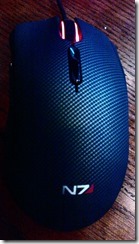 Being a huge fan of Mass Effect, I was lucky to be able to buy it from a computer store in SM North EDSA early this year. I have made this my primary mouse as a.) my old Microsoft Sidewinder was having issues with the left mouse button b.) the Orochi was built for a mobile device, and prolonged usage of it can stress out my hands.
Being a huge fan of Mass Effect, I was lucky to be able to buy it from a computer store in SM North EDSA early this year. I have made this my primary mouse as a.) my old Microsoft Sidewinder was having issues with the left mouse button b.) the Orochi was built for a mobile device, and prolonged usage of it can stress out my hands.
The mouse is clad in a carbon fiber like skin, similar to what the N7 Armor has in Mass Effect 3. the LED on it’s mouse wheel is colored red from the usual blue lighting effect due to its N7 edition status. The side mouse buttons, a feature which differentiates the Imperator from other mice is that it’s adjustable to fit the user’s thumb. Unlike the Orochi, the Imperator only connects through a USB cable. Ergonomics wise, it’s easier to grasp it, and has a thumb rest below the 4th and 5th mouse buttons. Similar to my old Sidewinder, the Imperator has a mouse sensitivity selector which can adjust the overall sensitivity while playing.
At the price point similar to the Orochi, we’re getting something much simpler, less cutting edge technologies applied, but having a more ergonomic profile for right handed mouse users, and that N7 marking too.
Black Widow Tournament Edition:
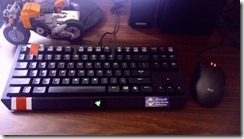 There wasn’t any stock of the regular Black Widow keyboard when I was out looking for a replacement keyboard. I had to settle with getting the Black Widow Tournament Edition in the meantime. With that said, the reason of picking it at that time was it’s cheaper, way cheaper than the Ultimate Edition, which major difference with the regular Black Widow is that it had lighted keys.
There wasn’t any stock of the regular Black Widow keyboard when I was out looking for a replacement keyboard. I had to settle with getting the Black Widow Tournament Edition in the meantime. With that said, the reason of picking it at that time was it’s cheaper, way cheaper than the Ultimate Edition, which major difference with the regular Black Widow is that it had lighted keys.
Being a mechanical keyboard, a significant advantage to this against using a a conventional keyboard would be the speed of which commands are made and felt.
A quick history: compared to a conventional membrane based keyboard, the mechanical keyboard instantaneously picks up an entry w/o requiring the user to completely press a key. The only downside was that a mechanical keyboard can be easily damaged when spilled with liquids. That’s the reason why mechanical keyboards ‘disappeared’ from mainstream devices, however this generation’s mechanical keyboards are far faster than the previous generations.
The numpad in the black widow can be missed, and it’s compact nature fits well with my mATX themed casing/setup as well it adds additional space for my mouse to move around in. It has some lighted keys like Caps Lock, keys disablement. The Razer Logo lights up green as well. Another nice feature is the noise the keyboard (and all other mech keyboards have), the click clack sound of a person typing.
On Software
Razer has it’s own suite of input device application called Razer Synapse. Similar to Logitech’s device app, it manages macros and general peripheral settings. However, unlike Logitech’s that manages to load all device information to the app, Razer didn’t put all of their devices into Synapse. All of my mice require a separate app to manage them and isn’t tied to Synapse, only the latest models were added (2013 or higher end models). While the individual apps do cover the customizations of the device, I find it weird that it couldn’t be applied to a single app. Although the newer devices released by Razer have full support of the app, I’m a bit disappointed with the support on older releases.
The Php 18000 Gaming PC (Machine Only) 2013
And we’re back with the 2013 installment of bang for the buck gaming PC!
A year or so back I’ve manage to build a gaming PC based on a local retailer’s parts listing worth Php 18,000. With the progression of PC technology into greater heights, comes the possibility of having a faster PC. Being that the last machine was over by Php 2,400. I’ve updated the budget to be around Php 18,000.
Here’s what I’ve came up based on research of each part and its availability here. This time around I’ve chosen the AMD platform for its low cost per performance, and built in graphics performance which bests Intel’s lineup.
Instead of going with a solution where the graphics card is separate from the processor, I’m going with a solution wherein the video card is built into the processor, hence the AMD A8 6600k w/ Radeon 8570D.
Main Parts to Acquire:
Here’s the breakdown of the cheap setup:
| Part | Price |
| Processor: AMD A10 5800K, Radeon HD7660D |
5980 |
| Motherboard: Gigabyte F2A55M DS2 |
2610 |
| Memory: G.Skill RipJaws X Dual (2x2Gb) DDR3 1600 CL9 |
2030 |
| Hard Disk: WD Black 500GB |
3120 |
| Graphics: Included with Processor |
– |
| DVD Drive: Samsung 2x SHS222 SATA black |
750 |
| Case: Fractal Core 1000 |
1450 |
| Power Supply: HEC Cougar SL400 80% |
1480 |
| Total: |
17420 |
Based on the results, I am able to get much more performance to the budget increase of Php3000. One gets a quad core PC with it’s own internal graphics (not just any internal graphics but a mid ranged model) and with a faster set of RAM (same size of 4GB but faster transfer speed). With the release of AMD’s better performing video drivers late in 2011, it has certainly improved graphics performance in lieu with the processor, making this a bang for the buck choice.
This review of the AMD A10 5800K shows how well this processor can perform:
A speed increase on the HDD is also noticeable, as prices of HDD have now gone down since the Thailand Floods, it now replaces the old WD Blue HDD. DVD Drive’s gone down as well.
The casing went down by a small Php10, but still it’s worth squeezing out every Peso from the budget. still the best modestly sized casing for micro ATX boards and built w/o being too flimsy or “tin cannish”. I’m sticking to the Fractal Core 1000 as the case due to it’s simple design and liberal use of thumbscrews and stabilized, utilizing a modular power supply helps in improving air circulation with fewer cables lying around.
For the Power supply, unfortunately the Antec VP450 450W power supply ran out of stock, but I’ve replaced it with a similar performing PSU in the form of the HEC Cougar SL400. I’ve been a long time user of HEC PSU’s since their early beginnings here (circa 2004) and I still believe in their performance and build quality. Some cable management may be needed once installed on the Core 1000. It may be cramped, but with the use of some cable ties cooling can still be made possible.
Unlike the previous build, I’m not adding a recommended boost (ie. upgrading to Core i3 or for AMD, A10 6800K) as by its own, the system can perform well. Also, the difference between the newer A10 6800K and the older 5800K is small so getting the older one is better. For the long term use (after 2 years or 3 years+) one can opt for adding an additional video card to perform a “dual graphics” configuration, leveraging the in processor APU and a discrete GPU.
Addendum (Optional):
To expand on the already nice build, here’s some additional option parts to complete the build and use the machine, given one is starting from scratch:
| Part | Price |
| LCD: Samsung LS19A100 LED |
3890 |
| Keyboard: Logitech G100S Keyboard and Mouse |
1490 |
| Mouse: see above |
|
| Speakers: Creative SBS 120 |
870 |
| OS: Windows 7 Home Premium OEM 64Bit |
4400 |
| Total: |
10650 |
As always, these are just optional installers (one can downgrade to a 32Bit Windows 7 Home Basic OS for a lower price, but lose the use of the full 4GB of RAM). I would’ve picked Windows 8, however there’s something strange with Microsoft selling Upgrade only licenses in stores right now (no OEM or FPP package), which can force users to buy windows 7 then perform an upgrade.
Keyboards and speakers can be replaced with cheaper ones but caution on their longevity if gaming is a priority. Unfortunately, there are no ongoing Razer promos right now for their gaming keyboard and mice, so I’ve just picked out the Logitech entry level G100S keyboard and mouse combo.
Price list courtesy of PC Hub: http://www.tipidpc.com/useritems.php?username=PCHub (ONE big Caveat though, in order to get these low prices, just become a member of TipidPC, which is free).
Also here’s the online build from pcpartpicker.com: http://pcpartpicker.com/user/kuyaaids/saved/1RYz (it costs around $364.33, but that’s w/o the taxes applied, which would explain a lower price.
Gigabyte Introduces the new Motherboards for Intel Haswell
Last May 25, I was invited by Gigabyte to attend their enthusiasts’ gathering and overclocking contest at the office of TipidPC. Inside a conference room sat six units of their new Z87X-OC for a demo on its performance when overclocking a Haswell (4th Gen Core Processor).
The event started off with an introduction of the new board’s features and some tips on which settings the board can easily be tweaked to overclock the new processor using heatsink fans.
Later in the afternoon saw teams being formed and a contest to see which team can perform the best overclocked system in a given time. And for the finale, everyone from the team would challenge each other for the best overclocked system (all boards, processors and memory have been mixed up to ensure settings and parts would differ for each contestant).
Up for grabs were the motherboards on display if I remember correctly: Z87X-OC or Z87X G1.Sniper 5, Z87X-D3H and goody bag for the consolation prize.
Here are some of the photos during the event:
Practical Review: Palit 650GTX TI Boost OC
Palit has recently sent me a copy of their new entry mid-level gaming graphic card, the 650GTX TI Boost OC.
The 650GTX TI Boost OC presents the best of the entry mid level model from NVIDIA, which has been recently released and would probably be one of the last of the 600 series video cards to come out, before the release of the 700 series. (780 is now available, so I’ve heard)
The box for this processor is a simple rectangular box, similar to any Palit video cards (except for their Jetstream cards), it comes with adapters, driver cd, manual and power cables for the card itself.
Dimension wise, the 650GTX TI Boost OC is around the same size of my current video card on my current Mid Range System, a Palit 450GTS video card. It also sports the same 2 1/2 slot height as the 450 and also requires only one PCIE cable from the power supply.
The 650GTX TI Boost have the following features:
NVIDIA 3D Vision Surround
Dual Fan configuration
Adaptive V-Sync – automatically enables V-Sync to smoothen gameplay
PCIe 3.0 – improved PCI Express bus for higher data transfer speeds
GPU Boost – dynamically maximizes the clock speed of the GPU based on the workload of a game played.
HDMI – for high definition video
Display Port – for ultra high definition video monitors
DirectX11 – enables the use of the new graphical enhancements (improved tessellation performance)
Here’s Palit’s Spec Sheet for the 650GTX TI Boost video card:
| Palit 650GTX TI Boost | |
| Memory Amount | 2048 MB/ 2GB GDDR5 |
| Memory Interface | 192bit |
| Graphics Clock (MHz) | Base Clock 1006MHz/Boost Clock 1072MHz |
| Memory Clock (MHz) | 3054 MHz (DDR 6108 MHz) |
| CUDA Cores | 768 |
| Memory Bandwidth (GB/sec) | 146.6 |
| NVIDIA SLI-ready | 2-way |
| Microsoft DirectX | 11.1 |
| OpenGL | 4.3 |
| Bus Support | PCIe 3.0 |
| Maximum Digital Resolution | 4096×2160 (using HDMI) |
| Maximum VGA Resolution | 2048×1536 |
| Dual-Link DVI | Yes x2 |
| HDMI | 1.4a |
| Height | 2.5 slots (casing/enclosure) |
| PCB dimensions | 173mm x 112mm |
| Graphics Card Power | 140 W |
| Minimum Recommended System Power | 450 W |
| Supplementary Power Connectors | 6-pin x1 |
Here’s what GPU-Z can say about the GPU’s build. A comparison with the 670GTX (last card reviewed… no 660GTX was sent for review before). And that the Asus 560GTX card that I have suddenly conked out one day, which reduced the cards for comparison to just 650GTX and the 670GTX. The screenshot above shows that the GPU type on the 650GTX TI Boost is a newer GPU, GK106. For the other fetaures:
a.) Shaders: 1344 (670GTX) vs 768 (650GTX TI Boost)
b.) Texture Fillrate: 112.7G Texels (670GTX) vs 64.4 Texels (650GTX TI Boost)
c.) Pixel Fillrate: 28.2G Pixel/s (670GTX) vs 24.1G Pixel/s (650GTX TI Boost)
d.) GPU Clock (base/boosted): 1006MHz/1085MHz (670GTX) vs 1006MHz/1072MHz (650GTX TI Boost)
Working on a Connected Environment with WD
Being connected all of our waking time is a must for us. Be it our computers, laptops, tablets and phones; we use these devices to perform our work and hobbies.
In some cases storage can be a hassle especially for tablets and phones that don’t necessarily have the capacity to store, say one’s portfolio of photos, work files and videos for sharing.
There are solutions such as Dropbox or Skydrive which put storage up on the cloud. However if we’re dealing with greater than 30 GB of storage then these two solutions won’t exactly work. This is where having an application that is designed to connect to network drives at home come in handy. WD 2 Go is one such application.
WD 2 Go is an app that lets us connect our phones or tablets (Android/IOS/WP) to WD My Book Live based on our homes or office networks. It essentially interfaces with the My Book Live’s internal software and lets us browse the contents through our mobile device/s.
Operation is pretty simple, download the WD 2 Go App from any of the mobile device store (iTunes, Google Play, Windows Marketplace) and install it on your device. Next, open WD 2 Go App and choose “connect now”. Choose the device you have at your home network and enter the activation code. And there you have it.
Also to give a perspective on how it works on Windows Phone at least, here are actual phone shots taken:
By connecting your device to your networked storage device, you now have the power to access your photos/files/music and videos while on the go.

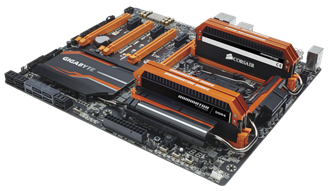
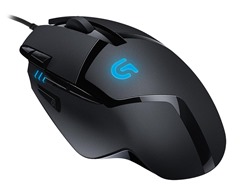
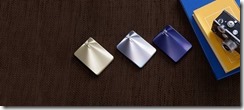
![clip_image002[4] clip_image002[4]](https://thegamingextra.files.wordpress.com/2015/02/clip_image0024_thumb.jpg?w=244&h=110)
![clip_image002[6] clip_image002[6]](https://thegamingextra.files.wordpress.com/2015/02/clip_image0026_thumb.jpg?w=244&h=110)

